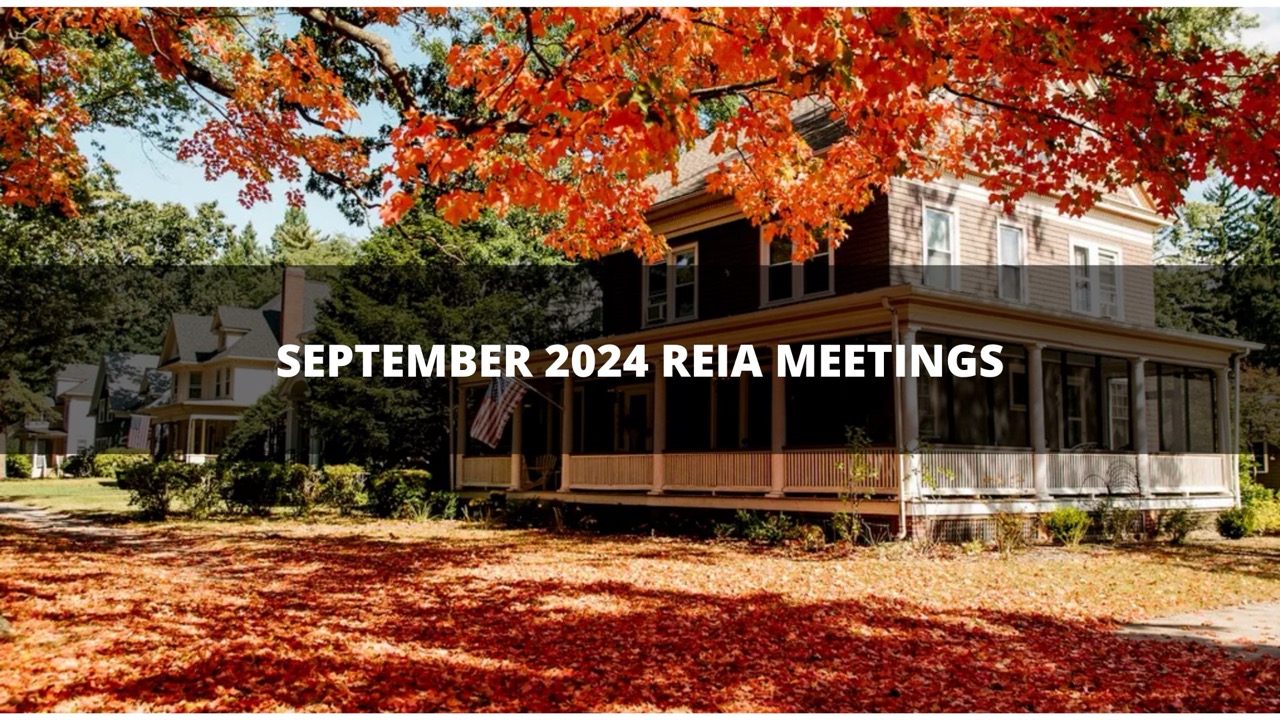What Investors Need to Know About Insurance for House Flippers
Home insurance. Two words that probably aren’t at the forefront of an investor’s mind when they’re buying deals…but unfortunately, insurance for real estate investors is a necessity.
Home insurance is complicated enough as it is, but it can become even more of a mess when it comes to investment properties, especially flipping properties. Well, have no fear! We brought in a seasoned home insurance agent for real estate investors to tell you about the best policies on the market right now, and to give you advice on what to avoid.

The Type of Insurances for Real Estate Investors (Flipper NEED These)
When my clients go into property flipping, they usually go with the insurance provider that they already use for their home and auto. For example, if you bought a flipping property, you would call State Farm or whoever provides your insurance. Most of the time they will tell you, “Well, we don’t really do that.” They say this because most insurance companies don’t like properties that are vacant or they don’t like rental properties because you would have a “builder’s risk” policy. What that means is there is nobody occupying the house while you are making changes to it.
What is in the marketplace now
Right now in the marketplace, there are programs out there for flippers that will put all the items a flipper wants covered into one policy. When a flipper buys a property, they usually buy the property from the bank or they buy it as a distressed property from a tax sale or other similar circumstances. These properties are usually vacant at the time of purchase. The day after the purchase is when arrangements to obtain financing for the rehab begin.
Traditional and vacant policies
A traditional policy will require the flipper to write a vacant building policy once they start the rehab. The instant the flipper starts to swing a hammer, they have to cancel the vacant building policy and move to a builder’s risk policy. Once all the renovations are complete, they either move back to a vacant policy or they go to a landlord policy if the property is being rented out.
There are some very popular programs in the market right now where a flipper can have one policy all throughout the rehab process and continue the policy when the property is being rented out. They do not have to start and stop policies or put in new deposits on the different policies. They also do not have to worry if they are covered or not.
If you plan on doing multiple flips per year, it can be very hard to keep track of all the policies. One of my clients in Illinois does 30 flips per year. Using this product, he is on just this one policy. Having one policy saves a lot of time and headache.
Benefits of Flipping Insurance
These policies are nice for investors that do multiple flips because they can email the addition or subtraction of a property. The payment plans for these policies are convenient because it’s just monthly payments. If an investor went and bought a stand alone vacant building policy, they would have to pay six months to a whole year upfront.
For the flipper programs, it is a month to month basis. If an investor keeps a flip for a month, they just pay one month as opposed to the traditional way where they pay a whole year’s premium.
This is probably the hottest product in the marketplace right now. This product can be hard to find for most clients if they are not in the right circle of investors who talk to the right people. Most insurance agents don’t know about these programs and because of that, being in the right circle is important.
How to access the programs
There are three different programs out there right now.
As an investor, you can go directly to some of the programs.
REA Guard is an example of one of the main programs that are available. On the other hand, investors can also go through agents such as myself. An investor can tell me everything I need to know about their investment and I can recommend the right program to them during that specific time.
Say for example you are an investor doing a higher end flip. You buy the property for $300,000-$400,000 and plan to sell it for $600,000-$700,000. With flips like those, I would recommend the stand alone builder’s risk policy because it has many more bells and whistles for a property that will be extremely nice.
But if you are flipping properties that you buy for $50,000 and you sell it for $100,000-$150,000, programs like REA Guard will be perfect.
You will not get this perspective when you call most insurance agents directly. You need to have an agent that deals with policies like this day in and day out, because they will be able to tell you the little differences between all the programs.
It’s similar to working with a tax person when it comes to tax time. Almost anybody can do their own taxes if they want to, but that doesn’t mean they know how to do their taxes correctly. The information is out there, but finding the information and then executing it correctly is another story.

Types of Policies
Vacant building policy
This is a policy for vacant properties, meaning that there is no one living on the property. This policy is considered a higher risk policy, but if you look at how flippers acquire properties, they usually buy properties that are already vacant, or they buy vacant bank owned properties. An investor can go to their insurance provider and ask if they can insure the property, and they probably will. They can insure it as a rental property and then write in conditions. Additionally, they can cancel the policy if you do not have an occupant in the first 60 days. They try to fit vacant properties into normal landlord policies even though this is not a normal property.
These policies can be a gray area because the investor opens the door for the insurance carrier to deny a claim, because they can state the the property was misrepresented even though you knew it was going to be vacant the whole time. At the same time though, personalized auto and home insurance agents usually only sell one product so they just try to sell you what they have. This is where flippers can get in trouble if they are aligned with the wrong agents in the first place.
Builder’s Risk Policy
This type of policy is for people who build their own houses from the ground up. This policy covers the building as it goes from nothing to a finished product. A normal landlord or homeowner’s policy is only used when the building is completed and ready to be occupied. But a builder’s risk policy will see you through the construction of the house and renovation.
This policy also has additional coverages that are applicable to the building process. For example, you order cabinets and you plan to pick them up from Home Depot. You drive back to the house with your cabinets in tow and they fall off the truck or the trailer, that builder’s risk policy will give you some coverage for what is called property in transit. This means that the property of the building that is going from point A to point B that is offsite will be covered.
These are the kinds of bells and whistles you get with a builder’s risk policy that you would not get on a vacant building police or on a landlord’s policy. This is why it is crucial to have that second policy.
Rental Dwelling Policy
This type of policy is used for buy and hold investment properties. What qualifies a property as being a rental dwelling is that the investor owns the property, but it is not their primary residence. These investors rent out these properties for business purposes.
Those are the three types of policies that flippers run into. These policies all have to do with stages in the process. It is much easier to just buy one program upfront and have that policy fit all your needs upfront. With these types of policies, you don’t need to worry about if you’re properly insured at that moment.
Sometimes it’s not possible. It’s just the way the marketplace is. If you’re flipping a property around the holidays or in the few months after when people aren’t moving…you will not get a renter until May because everyone is locked into their leases until April.
Potential Complications
Getting stuck in the wrong policy
With some of the annual leases where I’m located, there will typically be some sort of lock in between November 1st and March 31st that does not allow a tenant to leave on a 60 day notice. If you are there November 1st, then you are responsible for that lease all the way until March 31st. There are just certains times during the year where people do not move. If you find yourself being stuck in the wrong policy, chances are you are never going to find a tenant.
Communication
Sometimes there is very little communication between the agent and client. Sometimes clients make the assumption that they are covered and the agent is just assuming that the property hasn’t changed. The agent is not aware of the flipping process.
People are becoming more aware of flipping but five years ago when I was doing this, people were not aware of the exposure. They thought if a building was vacant, then it stayed vacant until it was sold. Or if you had a builder’s risk policy in place, you were doing enough work where it was gonna take you nine months to a year to finish. There is no way you could do it in 30 days.
You pretty much have two people who are unaware of what is going on on both ends of it. They are making a lot of assumptions about how the other one knows what’s going on. There’s a great chance that the claim is not going to be covered. This is the risk you run. It’s same as aligning with the wrong lawyer or the wrong accountant. Sometimes you don’t know what to ask for.
However, if you go to the right person, they will already know what problems you will run into. They’ll also know what solutions there are before you even know what to ask for. That is vitally important because if you go to the wrong up front, then there are going to be some problems.
Final Word of Advice
First, make sure to research some of the flipping programs that are out there. Second, make sure you are working with an investor-friendly agent. Agents who are familiar with house flipping will not only have the best policies, but will be the easiest to work with.








